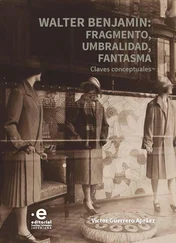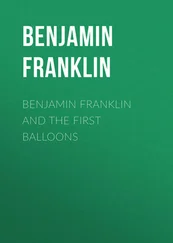To spew insults straight from the heart, and with such perseverance, is indeed a great talent, one reserved for a privileged few. It requires not only a high degree of crassness and a healthy lung, but also a large vocabulary and, not least of all, great wit. That one attributes such wit to the stall owners and market women is borne out by many wonderful stories. For example this one, which tells of a fruit peddler lying on her deathbed, suffering terribly at the prospect of dying. Her husband stands beside her, not knowing what to say but trying to comfort her: “Don’t worry too much that you have to die; everything’ll be ok, it’ll all work out. We all have to die once in our lives!” “Muttonhead,” the poor woman whispers, “that’s the whole point. If we had to die ten or twelve times, I wouldn’t care so much about this time.” The great Berlin catchphrase “Nothing to fear!” was also the motto for this sort of person. As you probably know, Berliners are not particularly impressed by education or refinement. And if they are, they never show it. There’s a wonderful Berlin scene from the middle of the last century, back when there were still no funny pages, but bookshops and stationery stores sold individual pictures, with captions and usually in watercolor, by known artists like Hosemann, Franz Krüger, or Dörbeck. 6Let me tell you about one: somewhere close to the Brandenburg Gate you see a fat fruit seller, and standing next to her is a more refined gentleman with a lady friend, both foreigners. You can tell just by looking at them that they don’t know much about Berlin. “My dear lady,” says the man, pointing at the Victoria statue atop the Brandenburg Gate, “can you tell me who that is on top of the gate?” Answer: “Yeah, sure, that old thing? Ancient Roman history, the Electors of Brandenburg, the Seven Years’ War. That’s all.” “Aha,” says the man, “Thank you kindly.”
I do not want to suggest that this sort of Berliner has died out, only that the class divide has become more marked. People stay more and more among their own kind so that, as a customer, it’s no longer so easy to get close to these sellers amid the hustle and bustle on market days. So as for the exquisite scoldings like the ones Glassbrenner passed on to us, there’s just no more time for them. Today’s market women have become more like businesswomen, and the butchers who come to the market have large, refrigerated storerooms where they load up on stock before heading to the market and offload their unsold goods afterwards. This brings us to another spectacle, which was as scrumptious for the eyes as the old Berlin weekly market was a feast for the ears: the market halls. When I was little, it was cause for celebration to be taken to the Magdeburger Platz market halls, where it was always so warm in winter and on hot days so cool. Everything is different there compared to the outdoor markets. First of all, there are huge mounds of one kind of goods, right next to another booth packed with something else. But above all there is the smell, a mix of fish, cheese, flowers, raw meat, and fruit all under one roof, which is completely different than in the open air markets and creates a dim and woozy aroma that fits perfectly with the light seeping through the murky panes of lead-framed glass. And let’s not forget the stone floor, which is always awash with run-off or dishwater and feels like the cold and slippery bottom of the ocean. Because I’ve rarely been to a market hall since I was little, going to one now brings back all the charm of visits long ago. And if I really want a special treat, I go for a walk in the Lindenstraße market hall in the afternoons between four and five. Maybe someday I’ll meet one of you there. But we won’t recognize each other. That’s the downside of radio.
Most of this sort of business has utterly vanished from the streets of Berlin. And with it, the sand wagons, whose drivers, up until around 1900, would holler in front of every house and in every courtyard: “Sand, getcha white sand!” They would come from the Rehberg Mountains in the North, from Kreuzberg in the South and from all over with the white sand that housewives used to scrub their floors clean and white. Or the kipper wagons. Or colporteurs, door-to-door book peddlers who earned meager livings selling pulp novels with colorful pictures and, quite often, sheet music and song lyrics. Before the advent of advertising, publishers had turned to colporteurs to market their books to the people. It’s fun to imagine the quintessential book traveler from this time among these social classes, bringing ghost stories and tales of noble knights into servants’ quarters in the city and farmhouse parlors in the countryside. He himself featured in many of the stories that he sold. Not as the hero, of course, and not as the young, outcast prince, but rather as the wily old man, the warner, or the seducer. Selling in those days for just a few pennies, these broadsheets, especially the so-called Neuruppiner Bilderbogen by Gustav Kühn, have now become very rare and valuable items. 7
Colporteurs have all but disappeared, at least in today’s Berlin, where they have been replaced by the book cart. The bookseller on the streets of Berlin is the only book dealer that can actually be found reading the books that he sells. Often seated on the narrow stone ramp of a garden or on a canvas stool he has brought with him, he is unfazed by people rummaging through his wagon; he knows that not even one in ten has any real intention to buy. Anyway, were he to depend on people coming with a serious intention to buy, he’d be in sorry shape. But that’s the thing with the book carts: people buy books they never would have dreamt of buying when they set out from home in the morning. Casual readers. Casual enthusiasts. Only during the great inflation was it any different. 8Those who could spare just one extra penny for books could get something worth a hundred or a thousand times its price. The currency devaluation combined with the naïveté of the sellers, who were not all that well informed to begin with, created a situation ripe for collectors to exploit.
The book cart seller is rather quiet. He is, however, an exception; for in general, the Berlin street trade is the elite training ground of the Berlin Schnauze, a veritable academy for Berlin dialect. To conclude for today, I will recite for you a masterpiece of Berlinish, something you don’t get to hear every day on the street. As you might have noticed, such a speaker gathers momentum, before anyone is listening or paying him any attention, by setting himself up in front of his “Universal Spot Remover,” his necktie, or his Crystal Palace glue. Then, in a death-defying manner, he lets loose a diatribe, accompanied wherever possible by gestures, until someone, just anyone, bites. But by “bites,” I don’t mean “buys.” In the street trade, the sale is but the last link in a chain. The first being the enthusiasm of the speaker, and the second, that he draw as many listeners and spectators as possible. The street seller stands in the center. Having learned his speech by heart, he repeats it over and over. His listeners know it just as well as he does. For them, the interesting part is how he always pulls it off, albeit with digressions and slight variations, or how each time at certain critical points he reproduces the exact same intonation with the precision of a gramophone. Should one of the bystanders finally break down and buy something, he must step forward and stand with the seller in the middle of the circle, like two actors sharing the stage in an arena. The allure of being part of the performance, playing a role, and being seen is a key incentive for the buyer.
And so, our man with the collar stiffener: “Ladies and gentlemen! Don’t think I want to deceive you into acquiring something that isn’t tried and true. A group of experts from the field have analyzed this collar stiffener and put it to the test. Would you like to see it? Then step right up! My collar stiffener is the best on the market and the most practical of its kind. So simple, so elegant, yet cheap as can be! In these times, when we all have to pinch our pennies before we spend ‘em, but if we want to get somewhere in life we must still look clean, this collar stiffener is a saving grace for the whole world. Yes, ladies and gentlemen, you may laugh. But one day you’ll see I’m not exaggerating.” In the meantime a larger crowd of about twenty or thirty people has gathered around the seller. He picks up his stiffener and explains how it works. “Observe, ladies and gentlemen, you take the flimsy turn-down collar, open it up, put in the collar stiffener, close it up, fasten the collar, and now how’s it look? Firm and elegant! Firm and elegant! Even the necktie sits so much better now. Before, the collar used to look dirty after just a few hours, but now you can wear it for eight days! Always firm and elegant! When you are up for a job wearing my product, you’ll stand head and shoulders above the rest. The boss will point at you and say: Yes, that man is firm and elegant!”
Читать дальше












